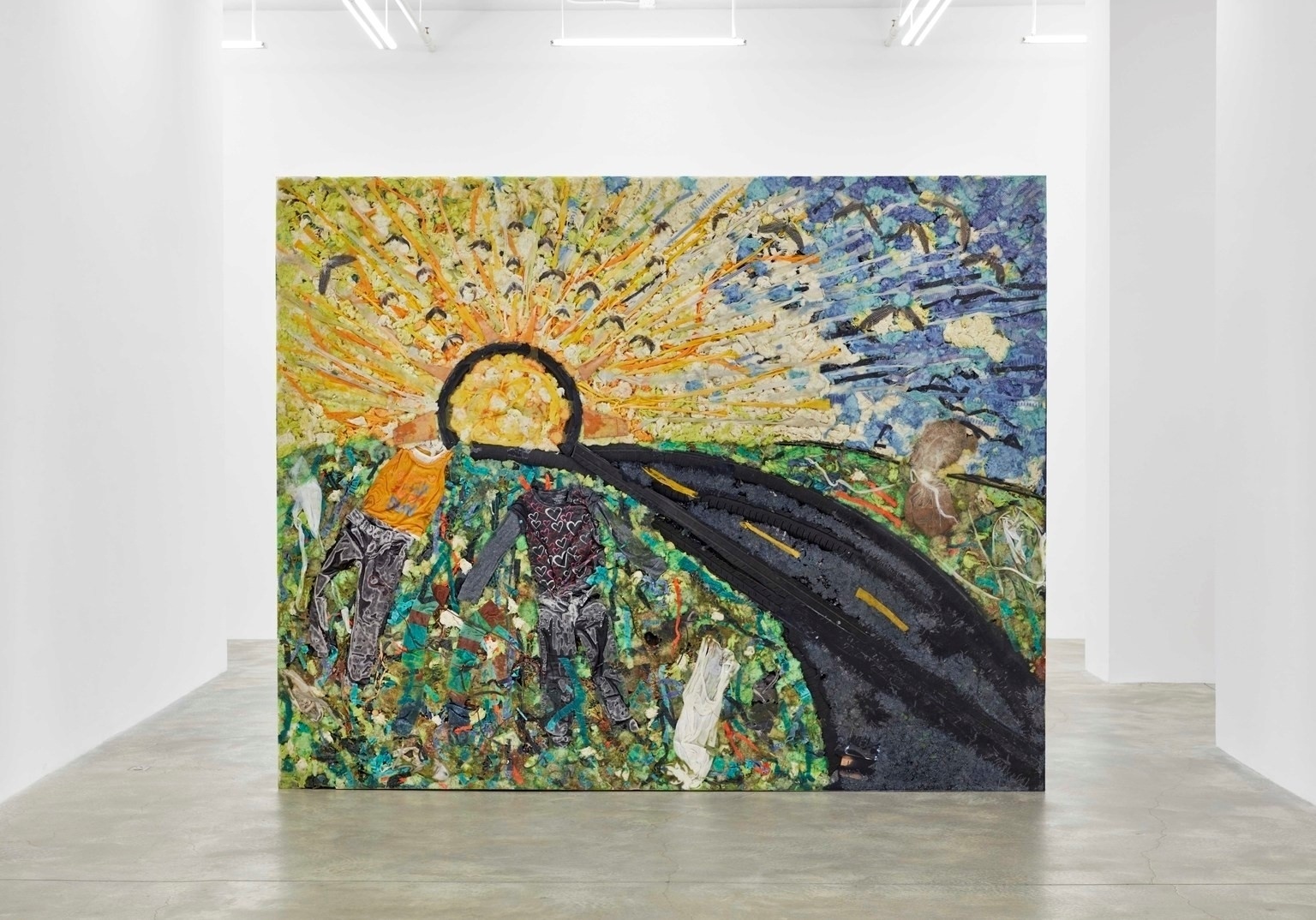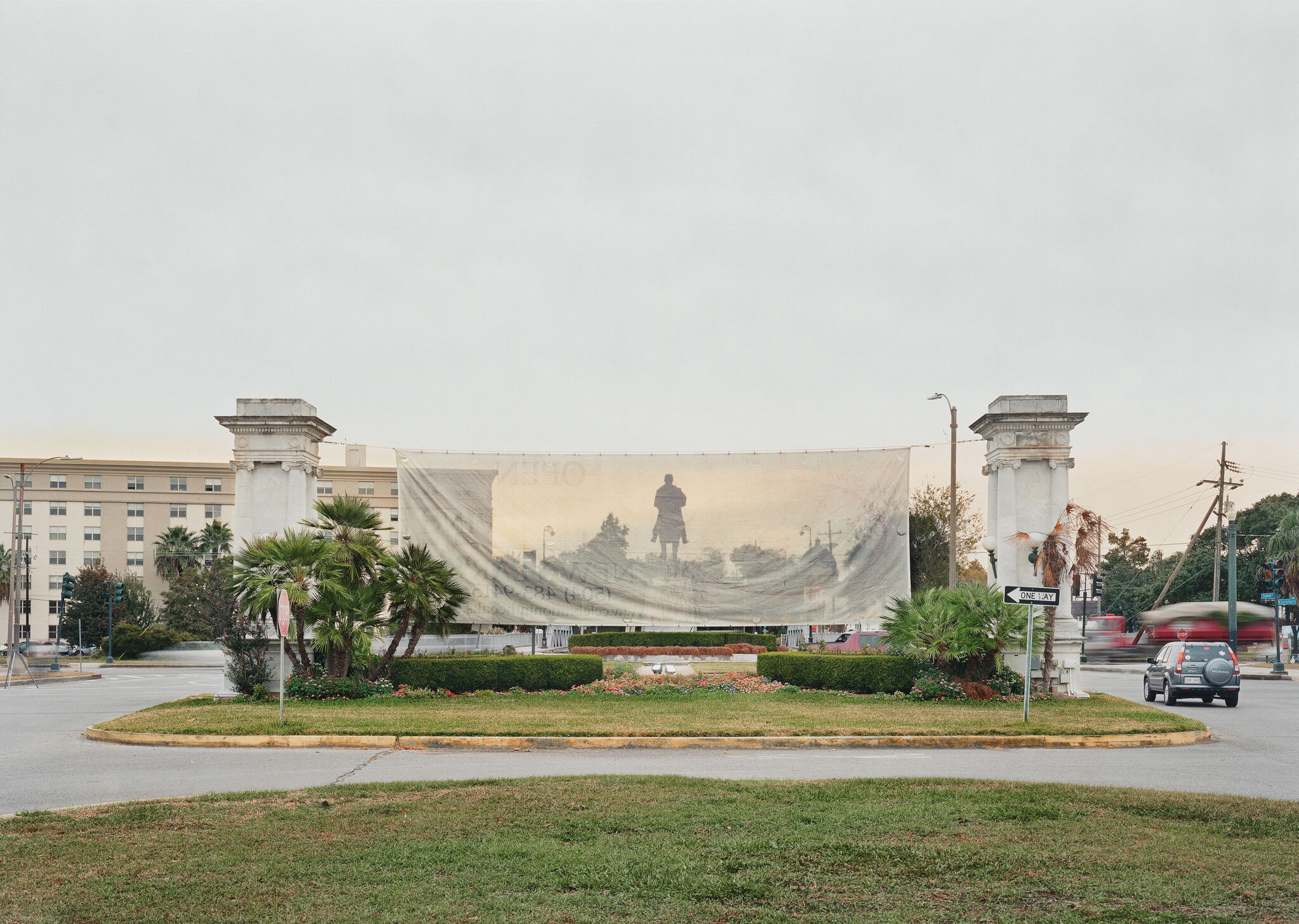Verbal Description: Kevin Beasley, The Road, 2019
June 1, 2023
0:00
Verbal Description: Kevin Beasley, The Road, 2019
0:00
Narrator: Kevin Beasley’s The Road is a 96 × 120 × 10 inch mixed media “slab” sculpture, which feels monumental in scale. The long list of materials he used is as follows: polyurethane resin, raw Virginia cotton, Virginia soil, Virginia twigs, Virginia pine needles, house dresses, kaftans, t-shirts, du-rags, altered housedresses, altered kaftans, altered t-shirts, altered garments, altered tires, scarf, guinea fowl feathers, down feathers, copper, jewelry, shoelaces, mobile phone, burlap satchel, windshield wipers, altered African fabrics, socks, Timberland boots, aluminum, and steel. These materials are layered like a collage to create a vibrant scene of bursting colors and electric potential. Starting on the bottom left, an abstract figure wearing dark pants and an orange top stands next to another figure in dark pants and a dark shirt covered in white hearts. The clothes of the two figures were sourced from the artist’s family members. The two figures walk through fields of green that lie next to a dark road heading directly into the sunny horizon. In the fields, much can be assumed or presumed—shadows of animals, hints of other bodies, an accumulation of belongings, an abstracted sense of belongingness. Above the figures rests a bright sun emitting radial beams of orange, yellow, and white light. In the light of the sun are the silhouettes of birds flapping their wings. To the right of the sun is a sky composed of multiple blue hues where more birds fly. On the reverse side of the work, dyed black raw cotton and cut car tires trace the form of a car.
Created as a narrative relief – that is, the implementation of multiple figures and scenes of events placed in continuous sequence like a comic strip – The Road depicts histories of the Great Migration, wherein millions of rural Black families fled the oppressive conditions of the Southern United States in search of new opportunities in Northern urban centers. The intense contrast between the utopic brightness of the face of the work and the darkness of the reverse side encourages the viewer to reflect on the harsh reality of the Great Migration: although it was a movement undertaken to flee from oppression in the South, discrimination, violence, racism, and disparity flourished in the North as well.
In Inheritance.


